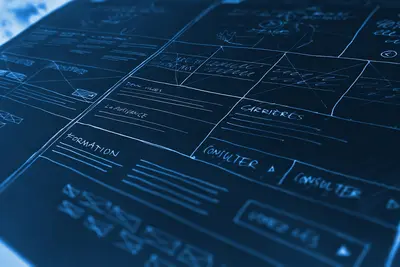Educational Lab Environments with Alpine Linux
Alpine Linux is perfect for educational environments due to its minimal footprint, security, and flexibility. Let’s build comprehensive lab environments for teaching various IT subjects! 🏫
Why Alpine Linux for Education?
Alpine Linux offers:
- Minimal Resources: Run many VMs on limited hardware
- Quick Deployment: Fast installation and cloning
- Security Focus: Teach security best practices
- Real-World Skills: Industry-relevant experience
- Customizable: Build specific learning environments
Lab Architecture Overview
Infrastructure Components
┌─────────────────────────────────────────┐
│ Lab Management Server │
│ (Instructor Control Station) │
└────────────────┬────────────────────────┘
│
┌───────────┴───────────┐
│ Virtual Network │
└───────────┬───────────┘
│
┌─────────────┼─────────────┐
│ │ │
┌──┴──┐ ┌──┴──┐ ┌──┴──┐
│VM 1 │ │VM 2 │ │VM N │
│Student│ │Student│ │Student│
└─────┘ └─────┘ └─────┘Step 1: Set Up Lab Infrastructure
Install Virtualization Platform
# On the host server (Alpine Linux)
# Update system
sudo apk update && sudo apk upgrade
# Install virtualization tools
sudo apk add qemu-system-x86_64 libvirt virt-manager
sudo apk add bridge-utils dnsmasq iptables
# For container labs
sudo apk add docker lxc
# Enable services
sudo rc-update add libvirtd
sudo rc-update add dnsmasq
sudo rc-service libvirtd startConfigure Network Bridge
# Configure bridge for VMs
sudo nano /etc/network/interfacesAdd configuration:
# Physical interface
auto eth0
iface eth0 inet manual
# Bridge interface
auto br0
iface br0 inet static
address 192.168.100.1
netmask 255.255.255.0
bridge_ports eth0
bridge_stp off
bridge_fd 0
bridge_maxwait 0
# Lab networks
auto br-lab1
iface br-lab1 inet static
address 10.1.0.1
netmask 255.255.255.0
bridge_ports none
bridge_stp offStep 2: Create Base Lab Images
Alpine Linux Base Image
#!/bin/sh
# create-base-image.sh
IMAGE_NAME="alpine-lab-base"
IMAGE_SIZE="4G"
ALPINE_VERSION="3.18"
# Create disk image
qemu-img create -f qcow2 $IMAGE_NAME.qcow2 $IMAGE_SIZE
# Download Alpine ISO
wget https://dl-cdn.alpinelinux.org/alpine/v$ALPINE_VERSION/releases/x86_64/alpine-virt-$ALPINE_VERSION.0-x86_64.iso
# Install Alpine
qemu-system-x86_64 \
-m 1024 \
-cdrom alpine-virt-$ALPINE_VERSION.0-x86_64.iso \
-hda $IMAGE_NAME.qcow2 \
-boot d \
-net nic -net user \
-nographic
# After installation, create snapshot
qemu-img snapshot -c fresh-install $IMAGE_NAME.qcow2Configure Base Image
# Inside the VM - basic configuration
# Set up repositories
setup-apkrepos
# Install essential packages
apk add sudo nano wget curl git htop
# Create lab user
adduser -D student
echo "student:student" | chpasswd
echo "student ALL=(ALL) NOPASSWD: ALL" > /etc/sudoers.d/student
# Configure SSH
apk add openssh
rc-update add sshd
echo "PermitRootLogin no" >> /etc/ssh/sshd_config
echo "PasswordAuthentication yes" >> /etc/ssh/sshd_configStep 3: Linux Fundamentals Lab
Create Linux Basics Environment
# Clone base image
qemu-img create -f qcow2 -b alpine-lab-base.qcow2 linux-basics.qcow2
# Customize for Linux basics
# Boot the VM and configureInside the VM:
# Install learning tools
sudo apk add man-pages mandoc util-linux-doc
sudo apk add tree file less
sudo apk add coreutils-doc bash-doc
# Create exercise files
mkdir -p /home/student/exercises/{basics,shell,permissions}
# Create sample files for exercises
cat > /home/student/exercises/basics/readme.txt << 'EOF'
Welcome to Linux Basics Lab!
Exercises:
1. Navigate the filesystem
2. Create and manage files
3. Understanding permissions
4. Process management
5. Package management
EOF
# Create permission exercise
mkdir -p /home/student/exercises/permissions/test
touch /home/student/exercises/permissions/test/{file1,file2,file3}
chmod 644 /home/student/exercises/permissions/test/file1
chmod 755 /home/student/exercises/permissions/test/file2
chmod 600 /home/student/exercises/permissions/test/file3Lab Exercises Script
#!/bin/sh
# /usr/local/bin/lab-exercise.sh
show_menu() {
clear
echo "===== Linux Basics Lab Menu ====="
echo "1. Filesystem Navigation"
echo "2. File Operations"
echo "3. Permissions"
echo "4. Process Management"
echo "5. Package Management"
echo "6. Exit"
echo "================================="
}
filesystem_exercise() {
echo "=== Filesystem Navigation Exercise ==="
echo "Tasks:"
echo "1. Find your current directory"
echo "2. List all files in /etc"
echo "3. Navigate to /usr/share/doc"
echo "4. Return to your home directory"
echo "5. Create a directory structure: projects/2024/linux"
echo
echo "Press Enter when ready to check your work..."
read
}
while true; do
show_menu
read -p "Select exercise: " choice
case $choice in
1) filesystem_exercise ;;
2) echo "File operations exercise..." ;;
3) echo "Permissions exercise..." ;;
4) echo "Process management exercise..." ;;
5) echo "Package management exercise..." ;;
6) exit 0 ;;
*) echo "Invalid option" ;;
esac
read -p "Press Enter to continue..."
doneStep 4: Networking Lab Environment
Create Network Lab VMs
# Create router VM
qemu-img create -f qcow2 -b alpine-lab-base.qcow2 router.qcow2
# Create client VMs
for i in 1 2 3; do
qemu-img create -f qcow2 -b alpine-lab-base.qcow2 client$i.qcow2
doneConfigure Router VM
# Inside router VM
# Enable IP forwarding
echo "net.ipv4.ip_forward = 1" >> /etc/sysctl.conf
sysctl -p
# Install networking tools
sudo apk add iptables iproute2 tcpdump wireshark-cli
sudo apk add bind-tools net-snmp-tools nmap
# Configure interfaces
cat > /etc/network/interfaces << 'EOF'
auto lo
iface lo inet loopback
# WAN interface
auto eth0
iface eth0 inet dhcp
# LAN interface
auto eth1
iface eth1 inet static
address 192.168.1.1
netmask 255.255.255.0
# DMZ interface
auto eth2
iface eth2 inet static
address 172.16.0.1
netmask 255.255.255.0
EOF
# Basic NAT configuration
iptables -t nat -A POSTROUTING -o eth0 -j MASQUERADE
iptables -A FORWARD -i eth1 -o eth0 -j ACCEPT
iptables -A FORWARD -i eth0 -o eth1 -m state --state RELATED,ESTABLISHED -j ACCEPTNetwork Lab Exercises
#!/bin/sh
# /usr/local/bin/network-lab.sh
cat > /home/student/network-exercises.txt << 'EOF'
Network Lab Exercises:
1. Basic Connectivity
- Ping between clients
- Trace route to internet
- DNS resolution tests
2. Firewall Configuration
- Block specific ports
- Create port forwarding rules
- Implement DMZ
3. Traffic Analysis
- Capture packets with tcpdump
- Analyze HTTP traffic
- Monitor bandwidth usage
4. Services Setup
- Configure DHCP server
- Set up DNS server
- Implement VPN
EOFStep 5: Web Development Lab
Install Web Development Stack
# In web-dev VM
# Install web servers
sudo apk add nginx apache2 lighttpd
# Install programming languages
sudo apk add php81 php81-fpm php81-mysqli php81-json
sudo apk add python3 py3-pip py3-flask py3-django
sudo apk add nodejs npm
# Install databases
sudo apk add mariadb mariadb-client postgresql redis
# Development tools
sudo apk add git vim code-serverConfigure Web Development Environment
# Set up document roots
mkdir -p /var/www/{html,projects}
chown -R student:student /var/www/projects
# Configure Nginx for students
cat > /etc/nginx/conf.d/student.conf << 'EOF'
server {
listen 8080;
server_name localhost;
root /var/www/projects;
index index.html index.php;
location / {
try_files $uri $uri/ =404;
}
location ~ \.php$ {
fastcgi_pass unix:/run/php/php-fpm.sock;
fastcgi_index index.php;
include fastcgi_params;
}
}
EOF
# Create sample projects
mkdir -p /var/www/projects/{html-basics,php-app,python-app}Web Development Exercises
<!-- /var/www/projects/html-basics/index.html -->
<!DOCTYPE html>
<html>
<head>
<title>Web Development Lab</title>
</head>
<body>
<h1>Welcome to Web Development Lab</h1>
<h2>Exercises:</h2>
<ul>
<li><a href="exercise1.html">HTML Basics</a></li>
<li><a href="exercise2.html">CSS Styling</a></li>
<li><a href="exercise3.php">PHP Programming</a></li>
<li><a href="exercise4.html">JavaScript</a></li>
</ul>
</body>
</html>Step 6: Cybersecurity Lab
Security Tools Installation
# In security VM
# Install security tools
sudo apk add nmap wireshark-cli aircrack-ng
sudo apk add john hydra metasploit
sudo apk add nikto sqlmap burpsuite
# Install vulnerable applications
# DVWA (Damn Vulnerable Web Application)
cd /var/www
git clone https://github.com/digininja/DVWA.git dvwa
cd dvwa
cp config/config.inc.php.dist config/config.inc.php
# WebGoat
wget https://github.com/WebGoat/WebGoat/releases/download/v8.2.2/webgoat-server-8.2.2.jarSecurity Lab Scenarios
#!/bin/sh
# /usr/local/bin/security-lab.sh
create_vulnerable_services() {
# Weak SSH configuration
echo "PermitRootLogin yes" >> /etc/ssh/sshd_config
echo "PasswordAuthentication yes" >> /etc/ssh/sshd_config
echo "root:toor" | chpasswd
# Weak MySQL setup
mysql -e "CREATE USER 'admin'@'%' IDENTIFIED BY 'admin';"
mysql -e "GRANT ALL PRIVILEGES ON *.* TO 'admin'@'%';"
# Open ports
nc -lvp 1337 &
python3 -m http.server 8888 &
}
security_challenges() {
cat > /home/student/challenges.txt << 'EOF'
Security Challenges:
1. Network Scanning
- Identify all open ports
- Detect service versions
- Find vulnerable services
2. Web Application Security
- SQL Injection
- XSS Attacks
- Directory Traversal
3. Password Cracking
- Crack weak passwords
- Rainbow table attacks
- Brute force protection
4. Privilege Escalation
- Find SUID binaries
- Exploit misconfigurations
- Kernel exploits (sandboxed)
EOF
}Step 7: Programming Lab Environment
Multi-Language Development Setup
# Install programming languages
sudo apk add gcc g++ make cmake
sudo apk add python3 python3-dev py3-pip
sudo apk add openjdk11 maven gradle
sudo apk add go rust cargo
sudo apk add nodejs npm
sudo apk add ruby ruby-dev
# Install IDEs and editors
sudo apk add vim neovim emacs
sudo apk add code-server jupyter-notebook
# Version control
sudo apk add git subversion mercurialProgramming Exercises Structure
# Create exercise structure
mkdir -p /home/student/programming/{c,python,java,web}
# C programming exercises
cat > /home/student/programming/c/hello.c << 'EOF'
#include <stdio.h>
// Exercise 1: Complete this program
int main() {
// TODO: Print "Hello, Alpine Linux!"
return 0;
}
EOF
# Python exercises
cat > /home/student/programming/python/exercises.py << 'EOF'
#!/usr/bin/env python3
def exercise1():
"""Calculate the sum of numbers from 1 to n"""
# TODO: Implement this function
pass
def exercise2():
"""Find all prime numbers up to n"""
# TODO: Implement this function
pass
if __name__ == "__main__":
# Test your functions here
pass
EOFStep 8: Database Lab
Install Database Systems
# Install various databases
sudo apk add mariadb mariadb-client
sudo apk add postgresql postgresql-client
sudo apk add redis mongodb sqlite
# Install management tools
sudo apk add phpmyadmin pgadminDatabase Exercise Environment
-- Create sample database
CREATE DATABASE school;
USE school;
CREATE TABLE students (
id INT PRIMARY KEY AUTO_INCREMENT,
name VARCHAR(100),
email VARCHAR(100),
grade INT
);
CREATE TABLE courses (
id INT PRIMARY KEY AUTO_INCREMENT,
name VARCHAR(100),
credits INT
);
CREATE TABLE enrollments (
student_id INT,
course_id INT,
grade CHAR(2),
FOREIGN KEY (student_id) REFERENCES students(id),
FOREIGN KEY (course_id) REFERENCES courses(id)
);
-- Insert sample data
INSERT INTO students (name, email, grade) VALUES
('Alice Smith', '[email protected]', 10),
('Bob Jones', '[email protected]', 11),
('Charlie Brown', '[email protected]', 10);Step 9: Container and Cloud Lab
Docker/Kubernetes Environment
# Install container tools
sudo apk add docker docker-compose
sudo apk add kubectl helm
# Install k3s (lightweight Kubernetes)
curl -sfL https://get.k3s.io | sh -
# Add student to docker group
sudo addgroup student dockerContainer Exercises
# docker-compose.yml for exercises
version: '3'
services:
web:
image: nginx:alpine
ports:
- "8080:80"
volumes:
- ./html:/usr/share/nginx/html
app:
build: .
ports:
- "3000:3000"
environment:
- NODE_ENV=development
db:
image: postgres:alpine
environment:
POSTGRES_PASSWORD: exampleStep 10: Lab Management System
Central Management Script
#!/bin/sh
# /usr/local/bin/lab-manager.sh
LAB_BASE="/var/lib/labs"
STUDENT_COUNT=30
create_lab_environment() {
local lab_name=$1
local base_image=$2
echo "Creating lab: $lab_name"
for i in $(seq 1 $STUDENT_COUNT); do
vm_name="${lab_name}-student${i}"
qemu-img create -f qcow2 -b $base_image $LAB_BASE/$vm_name.qcow2
# Create VM
virt-install \
--name $vm_name \
--memory 1024 \
--vcpus 1 \
--disk path=$LAB_BASE/$vm_name.qcow2 \
--network bridge=br-lab1 \
--graphics none \
--console pty,target_type=serial \
--import
done
}
reset_lab() {
local lab_name=$1
echo "Resetting lab: $lab_name"
for i in $(seq 1 $STUDENT_COUNT); do
vm_name="${lab_name}-student${i}"
virsh destroy $vm_name 2>/dev/null
virsh undefine $vm_name
rm -f $LAB_BASE/$vm_name.qcow2
done
}
monitor_lab() {
echo "=== Lab Status ==="
virsh list --all
echo -e "\n=== Resource Usage ==="
virsh nodeinfo
echo -e "\n=== Network Status ==="
virsh net-list --all
}Student Progress Tracking
#!/bin/sh
# /usr/local/bin/track-progress.sh
PROGRESS_DIR="/var/lib/lab-progress"
mkdir -p $PROGRESS_DIR
track_exercise() {
local student=$1
local exercise=$2
local status=$3
echo "$(date),$student,$exercise,$status" >> $PROGRESS_DIR/progress.csv
}
generate_report() {
echo "=== Student Progress Report ==="
echo "Generated: $(date)"
echo
awk -F',' '{
student[$2]++
if ($4 == "completed") completed[$2]++
} END {
for (s in student) {
printf "%-20s: %d/%d completed\n", s, completed[s], student[s]
}
}' $PROGRESS_DIR/progress.csv | sort
}
# Auto-grade script
auto_grade() {
local student=$1
local exercise=$2
case $exercise in
"linux-basics")
# Check if required files exist
ssh student@$student-vm 'test -d ~/projects/2024/linux' && echo "PASS" || echo "FAIL"
;;
"networking")
# Check if services are running
ssh student@$student-vm 'pgrep nginx' && echo "PASS" || echo "FAIL"
;;
esac
}Step 11: Remote Access Setup
Configure Remote Desktop
# Install XRDP for remote desktop
sudo apk add xrdp xorgxrdp
sudo apk add xfce4 xfce4-terminal
# Configure XRDP
echo "exec startxfce4" > ~/.xsession
sudo rc-update add xrdp
sudo rc-service xrdp start
# VNC alternative
sudo apk add x11vnc tigervncWeb-Based IDE
# Install code-server
curl -fsSL https://code-server.dev/install.sh | sh
# Configure code-server
mkdir -p ~/.config/code-server
cat > ~/.config/code-server/config.yaml << EOF
bind-addr: 0.0.0.0:8443
auth: password
password: student
cert: false
EOF
# Start code-server
code-server &Step 12: Backup and Recovery
Lab Snapshot System
#!/bin/sh
# /usr/local/bin/lab-snapshot.sh
create_snapshot() {
local vm_name=$1
local snapshot_name=$2
virsh snapshot-create-as $vm_name $snapshot_name \
--description "Lab checkpoint: $(date)"
}
restore_snapshot() {
local vm_name=$1
local snapshot_name=$2
virsh shutdown $vm_name
sleep 5
virsh snapshot-revert $vm_name $snapshot_name
virsh start $vm_name
}
# Bulk operations
snapshot_all_labs() {
local snapshot_name="checkpoint-$(date +%Y%m%d-%H%M%S)"
for vm in $(virsh list --name); do
create_snapshot $vm $snapshot_name
done
}Best Practices for Educational Labs
-
Resource Management
- Use thin provisioning for disk images
- Implement memory ballooning
- Set CPU limits per VM
-
Security
- Isolate lab networks
- Use firewalls between segments
- Regular security updates
-
Automation
- Automate deployment
- Script common tasks
- Use configuration management
-
Documentation
- Provide clear instructions
- Include troubleshooting guides
- Maintain exercise solutions
-
Monitoring
- Track resource usage
- Monitor student progress
- Log all activities
Conclusion
You’ve created a comprehensive educational lab environment with Alpine Linux! This setup provides:
✅ Scalable Infrastructure: Support many students efficiently ✅ Multiple Lab Types: Linux, networking, security, programming ✅ Management Tools: Easy deployment and monitoring ✅ Hands-On Learning: Practical, real-world scenarios ✅ Progress Tracking: Monitor student advancement
Alpine Linux’s efficiency makes it perfect for educational environments, allowing students to learn on realistic systems while maximizing hardware resources! 🎓




